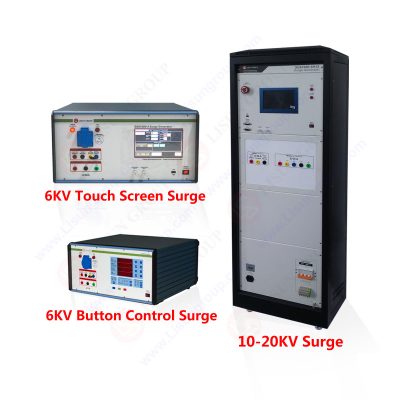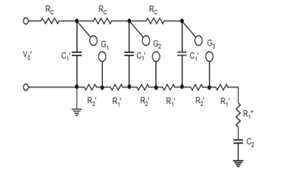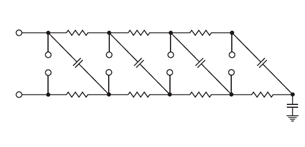Surge generators are useful in running tests on electrical components of products and gadgets. the surge generator working principle helps understand how the device runs tests and helps understand the results. In this article, we investigate the history of surge generators with the advancements in this technology and how LISUN is being a part of this legacy.
The SG61000-5 is a fully automatic surge generators (also known as a lightning surge immunity test, a combination wave generator, a surge current generator/surge voltage generator, and a combined surge voltage and current generator).
The SG61000-5 surge generator provides a common basis for evaluating the resistance of different equipment’s power cords and internal connectors to high energy transient interference caused by natural lightning surge induction and large capacity load switching. It fully complies with the standards IEC 61000-4-5, EN61000-4-5, and GB/T17626.5.

surge generator
He discovered voltage multiplication in 1863 and demonstrated it in 1868 with a “tubular voltage generator” [voltage multiplying condenser of cascade connection], which was successfully displayed at the Vienna World Exposition in 1873. The jury, chaired by Werner Siemens, awarded his invention the “For Progress” prize. Because of his negative experience at the 1855 Paris Exhibition, Jedlik did not travel to Vienna to accept the award.
Jedlik developed the cascaded connection surge generator principle using this condenser (the Cascade connection was another important invention of Jedlik). The generator was a forerunner of the impulse generators that are now used in nuclear research.
In 1924, Erwin Otto Marx invented a multistage impulse generator circuit. This circuit is designed to produce a high impulse voltage from a low voltage power source. The above circuit employs four capacitors (there can be an n-number of capacitors) that are charged in parallel by a high voltage source via the charge resistors. During the discharge situation, the spark gap, which was an open circuit during charging, acts as a switch, connecting a series channel through the capacitor bank and produces a very high impulse voltage across the load.The voltage of the first capacitor must be sufficiently exceeded to bridge the spark gap and activate the Marx generator circuit.

3-stage Marx impluse generator in circuit ‘b’ connections
When this happens, the initial spark gap connects two capacitors (C1 and C2). As a result, the voltage across the first capacitor is multiplied by two voltages, C1 and C2. As a result, the third spark gap automatically breaks down because the voltage across the third spark gap is high enough, and the third capacitor C3 voltage is added to thispile. This goes on until the last capacitor. Finally, when the voltage reaches the last and final spark gap, it is large enough to break the last spark gap across the load, which has a larger gap between the spark plugs.
In ideal circuits, the final output voltage across the final gap will be nVC (where n is the number of capacitors and VC is the capacitor charged voltage). In practise, the Marx Impulse generator circuit’s output voltage will be much lower than the desired value.
The last spark point, however, requires larger gaps because the capacitors will not fully charge if this is not done. The discharge is sometimes done on purpose. The capacitor bank in the Marx generator can be discharged in a number of ways.
Pulsing additional Trigger electrode: When the Marx generator is fully charged or in a special case, pulsing an additional trigger electrode is an effective way to intentionally trigger it. The additional trigger electrode is referred to as a Trigatron. Trigatron is available in a range of sizes and shapes, each with its own set of features.
Ionizing the air in the gap: Ionized air is a good way to conduct the spark gap because it is effective. A pulsed laser is used to ionise the gas.
Reducing the air pressure inside the gap: If the spark gap is designed inside a chamber, the reduction of air pressure is also effective.
The impulse generator circuit is primarily used to test high-voltage devices. The Impulse voltage generator is used to test lightning arresters, fuses, TVS diodes, and various types of surge protectors, among other things. The Impulse generator circuit is an important instrument not only in the testing field, but also in nuclear physics experiments, lasers, fusion, and plasma device industries.
The Marx generator is used in the power-line gear and aviation industries to simulate lightning effects. It can also be found in X-Ray and Z-Ray machines. Impulse generator circuits are also used for other purposes, such as testing the insulation of electronic devices.
The Goodlet surge generator circuit and the Marx surge generator circuit are nearly identical, with the distinction that the Goodlet circuit creates a negative polarity for a positive polarity input, whilst the Marx circuit provides the same polarity.
Because all of the gaps in the surge generator must be almost the same size in order to break down in sequence, the gap spheres are mounted along an insulating rod that may be moved to cause the gaps to rise or decrease at the same time.
The magnitude of the impulse voltage is not directly dependent on the gap spacing in the case of a controlled impulse generator, as it is in the case of uncontrolled generators. In this case, for the same gap spacing, a specific range of impulse voltages is available. The conditions that (a) no uncontrolled operation should occur (i.e., the gap spark over voltage must be greater than the applied direct voltage), and (b) the gap spark over voltage must not be significantly greater than the applied voltage, determine this range (in which case breakdown cannot be initiated even with the pulse).

Basic goodlet circuit
The surge generator working principle for different types of surge generators is different. Different surge generators have different working principles as they are developed as time passes.
Lisun Instruments Limited was found by LISUN GROUP in 2003. LISUN quality system has been strictly certified by ISO9001:2015. As a CIE Membership, LISUN products are designed based on CIE, IEC and other international or national standards. All products passed CE certificate and authenticated by the third party lab.
Our main products are Goniophotometer, Integrating Sphere, Spectroradiometer, Surge Generator, ESD Simulator Guns, EMI Receiver, EMC Test Equipment, Electrical Safety Tester, Environmental Chamber, Temperature Chamber, Climate Chamber, Thermal Chamber, Salt Spray Test, Dust Test Chamber, Waterproof Test, RoHS Test (EDXRF), Glow Wire Test and Needle Flame Test.
Please feel free to contact us if you need any support.
Tech Dep: Service@Lisungroup.com, Cell/WhatsApp:+8615317907381
Sales Dep: Sales@Lisungroup.com, Cell/WhatsApp:+8618117273997
Your email address will not be published. Required fields are marked *